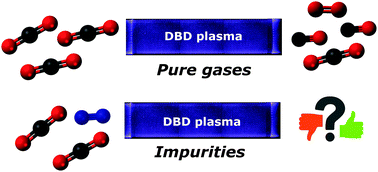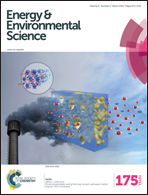CO2 conversion in a dielectric barrier discharge plasma: N2 in the mix as a helping hand or problematic impurity?†
Abstract
Carbon dioxide conversion and utilization has gained significant interest over the years. A novel gas conversion technique with great potential in this area is plasma technology. A lot of research has already been performed, but mostly on pure gases. In reality, N2 will always be an important impurity in effluent gases. Therefore, we performed an extensive combined experimental and computational study on the effect of N2 in the range of 1–98% on CO2 splitting in dielectric barrier discharge (DBD) plasma. The presence of up to 50% N2 in the mixture barely influences the effective (or overall) CO2 conversion and energy efficiency, because the N2 metastable molecules enhance the absolute CO2 conversion, and this compensates for the lower CO2 fraction in the mixture. Higher N2 fractions, however, cause a drop in the CO2 conversion and energy efficiency. Moreover, in the entire CO2/N2 mixing ratio, several harmful compounds, i.e., N2O and NOx compounds, are produced in the range of several 100 ppm. The reaction pathways for the formation of these compounds are explained based on a kinetic analysis, which allows proposing solutions on how to prevent the formation of these harmful compounds.


 Please wait while we load your content...
Please wait while we load your content...